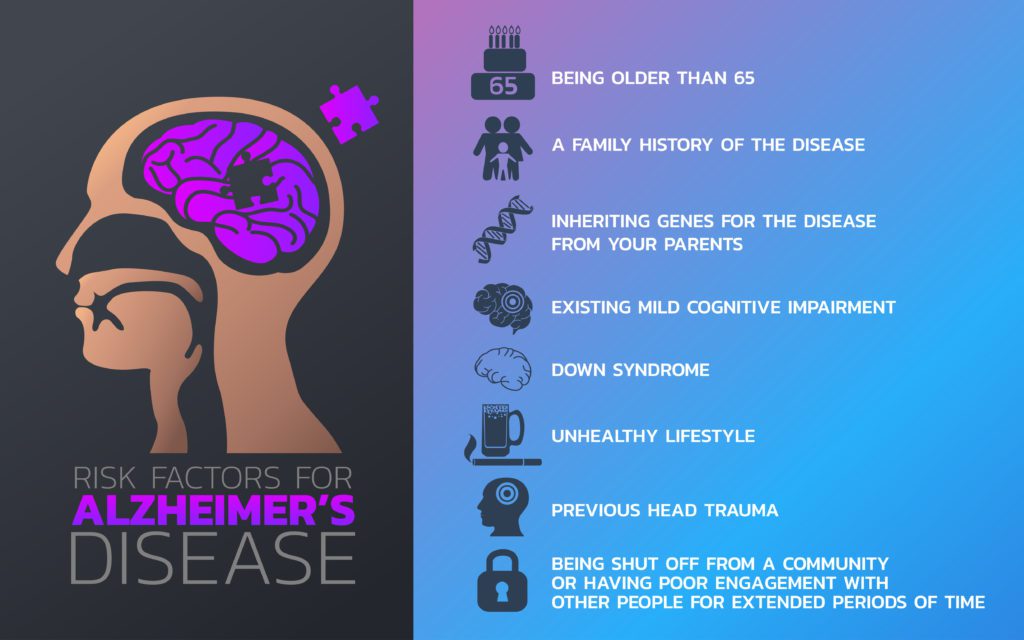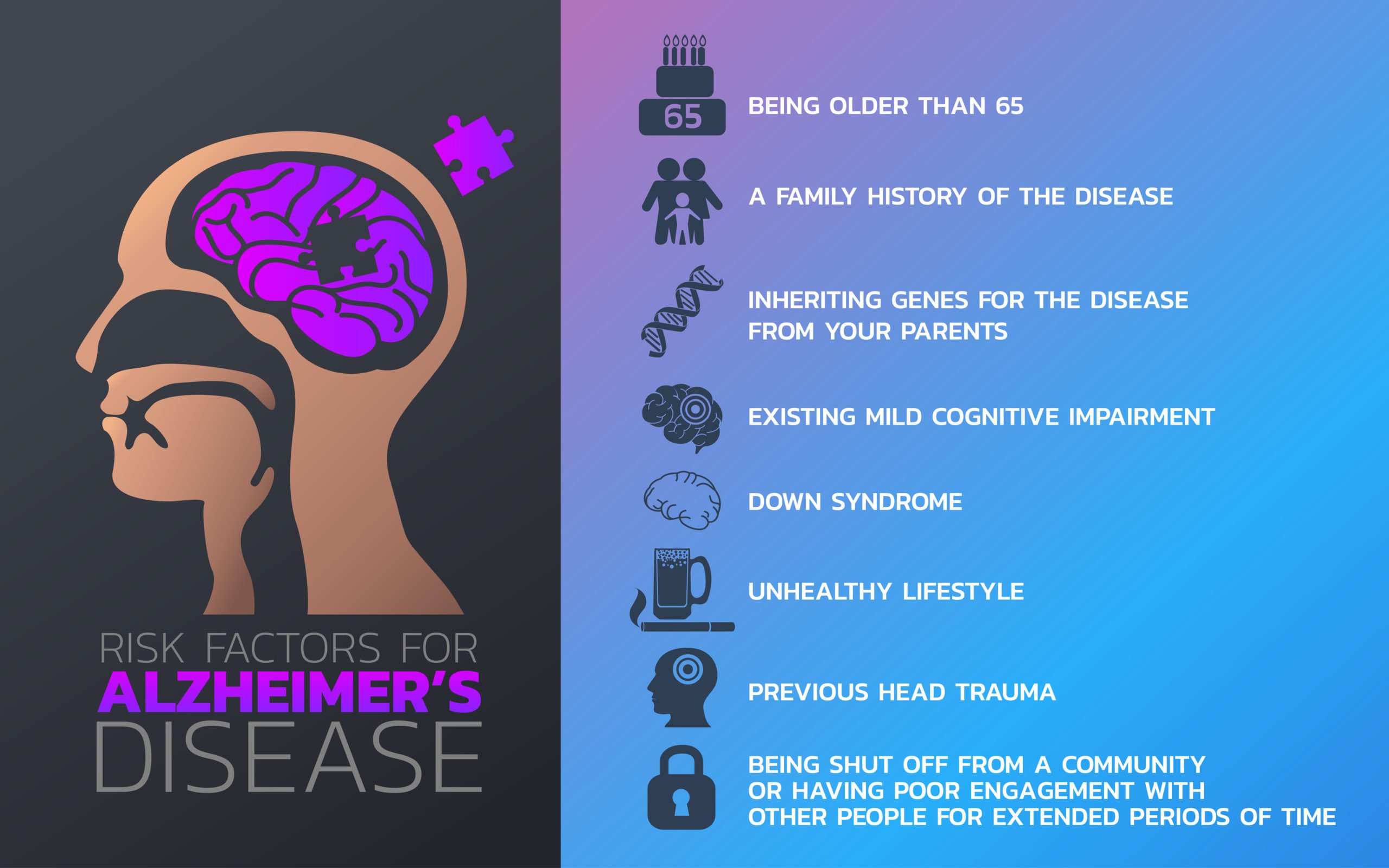
Alzheimer’s is a type of dementia, symptoms of which grow severe enough to engender difficulties over time. Alzheimer’s is a general term used for dementia and a common cause of memory loss, and another cognitive disease. Its well-known risk factor is increasing age and most of the people who are suffering from it are of age 65 and older, but this disease also affects below 65 years old as well.
Alzheimer’s disease reports 60 to 80 percent of dementia cases. In Pakistan, 2 million people are facing Alzheimer’s disease. Alzheimer’s patients fail to remember, to carry on a conversation with other people like in confrontation, argumentation and respond to their environment because they forget each and everything after suffering from it.
It’s incurable yet, but the treatment for early-stage diagnosis is available. Current Alzheimer’s treatment doesn’t stop dementia from continuing, but it can slow down the worsening situation of it. Today, worldwide efforts are going-on to treat this disease better.
Undetectable Stage
It is the early stage of Alzheimer’s disease in which no memory problem is shown in the person. Therefore it becomes difficult to detect anything at this stage. It is also known as no cognitive decline.
Duration
The average duration of stage two is approximately2 to 4 years.
Supervision
At this stage, Alzheimer’s patients need 24/7 supervision, to keep patients safe from disease. Medication at this stage is necessary, to control behavioral change.
Minor Forgetting Stage
During this stage, people start to forget recent events, face difficulty with problem-solving, like they forget where they left their car keys, etc. At this stage, one cannot easily notice it.
Duration
The average duration of stage two is approximately2 to 4 years. Medication at this stage is necessary for control in behavioral change.
Supervision
At this stage, Alzheimer’s patients need 24/7 supervision, to keep patients safe from disease. At these middle stages of Alzheimer’s patients’ life, intense care is not much required as in late stages is required. Medication at this stage is necessary, to control behavioral change.
Mild Cognitive decline
At this stage, the family member and surrounding people of Alzheimer’s patients are affable to notice this disease because the oblivion level increases including difficulty in focusing or concentration. Besides, during the stage, there is defragmentation in the workforce for those who hold outside employment affected.
Furthermore, people may feel themselves in fix, in finding correct words during confrontation or communication. Even though they go through snag during remembering their near and dear one’s name. So, this stage brings anxiety for loved ones if they were not able to discern disease at an early stage.
Duration
It takes an average period of 2 to 10 years. It takes a quite long time to develop transgressing of Alzheimer’s disease. Proper care is vital, at this stage.
More than Memory Loss
In stage four of Alzheimer’s disease, clear-cut indications of memory loss are easily perceived. In-between this stage, the person is deemed to have early-stage dementia. Damage to the brain involves various aspects of cognition outside the memory via; some difficulty with simple arithmetic calculation, language problem, short term memory problem.
They even forget the detail of their bill, forgetting who they are married to or what state do they live in. Even though, they feel restlessness at night ad during sleeping. Also, during the fourth stage of Alzheimer’s disease, it’s common to feel moody.
Reason for facing a snag
During this stage, all the difficulties are faced by the sufferer due to damage of brain cells and it can only be cured by medications.
Duration
The average duration of this stage is 2 years.
Mid-Stage Dementia
During this stage, people started losing their dependency like they need help in everyday activities, they feel the struggle in learning new things and performing basic tasks even getting dressed might be too much for them, inability to bring back details about themselves such as the cell phone number. They typically can’t bathe and use the toilet self-reliantly.
Learn More: Alzheimer’s Death Signs
Emotional changes
Emotional changes are common at this stage via Illusion, Misapprehension, and paranoia.
1. Illusion
In the illusion, he/she starts seeing things that aren’t there.
2. Misapprehension
In misapprehension, people firmly held belief in things that aren’t real.
3. Paranoia
In paranoia, patients feel that other people are against them.
Duration
It continues uphill stage 6.
Severe symptom stage
In this stage, people need incessant supervision and professional care because they feel difficulty in accomplishing tasks or successfully exhibiting cognitive skills such as counting in descending order from 10. The major impact at this stage due to dementia is speech inability and imperative changes occur in personality including anxiety, etc. At this stage, the patient is completely unaware of what he/she is doing.
Duration
This stage takes an average period of 1 to 3 years.
Last stage decline
It is the final stage in the development of Alzheimer’s disease. This stage destroys brain cells and eventually causes severe mental and physical impairment. And patient need around clock care for help in walking, sitting, and eventually lose the capability of swallowing.
People in this stage are very near to death for the disease has now reached its end point.
Pneumonia
Lack of mobility at this stage and also become infectious, such as pneumonia.
Duration
This is the final stage which remain in between 1 to 3 years. After completion of this time period there is certain death of Alzheimer’s patient.
Drugs usage
Drugs usage at this stage is prescribed by doctors known as the Cholinesterase inhibitors for assuage of pain.
Conclusion:
Alzheimer disease slowly and gradually worsens over the period of time of 4 to 20 years. Mostly people live 4 to 8 years after following diagnosis. The progression of disease vary from person to person .for this disease regular medical treatment and care is compulsory, in order to make it less vulnerable for a patient. This disease is a long bumpy road for patients and their loved ones as well.







